Michael Cliett launched his visual effects career over two decades ago at Zoic Studios with the film Serenity. Since then, he has contributed to various shows, including The Twilight Saga: Breaking Dawn – Part 2, King Arthur: Legend of the Sword, and The 100.
What is your background?
I knew from a very early age that I was very interested in visual effects and behind-the-scenes work. I still remember being six and going to the theater to see Raiders of the Lost Ark and not being horrified at how they melted the Nazis’ face, but rather really intrigued by how they did that – how they built the wax prosthetics and then melted them in layers, and sped up the film to make it look like these Nazis were getting melted on film.
I had another a-ha moment with Jurassic Park as a high school student. I was just blown away by how they could bring these dinosaurs to life with the existence of computers. I eventually found myself going to film school, and managed to get a meeting with the guys who were making Battlestar Galactica at the time. I spent a month crafting a 45-second space short for those guys, they liked it, and so they hired me on a Joss Whedon film called Serenity.
And so I worked my way up from there.. I was a jack-of-all-trades as an artist. I did comp work, I did CG work, I did FX, I did a bit of everything…so I learned every aspect of being a VFX artist on the box, and then worked my way into a VFX supervisor role. I want production side in 2016 and have been doing that ever since. I hope my background as an artist helps me to be a better VFX supervisor to the artists and VFX facilities that I collaborate with.
How did you get involved on this series?
Well they were looking for a visual effects supervisor based in Vancouver, and through some mutual contacts, I was placed in touch with the producers. When I initially sat down with them, one of the things that came up was my previous life experience living in Japan as a kid. I have a real affection for Japan, Japanese culture, food, traditions, people, history.. all developed at a very early age while living there. I’ve carried that with me my whole life.
One of my most fond memories with my dad was watching the original Shogun series on our first VHS player, in Japan. The fact that I knew they were remaking it, and we had the chance to remake it with all the tools we have available today, really struck me as an excellent opportunity. Combined with my love for Japan, and my vision for the show, I think I presented an attractive picture to help tell this reimagined story of Shogun. I was then hired onto the project and I was really thankful and grateful for that.
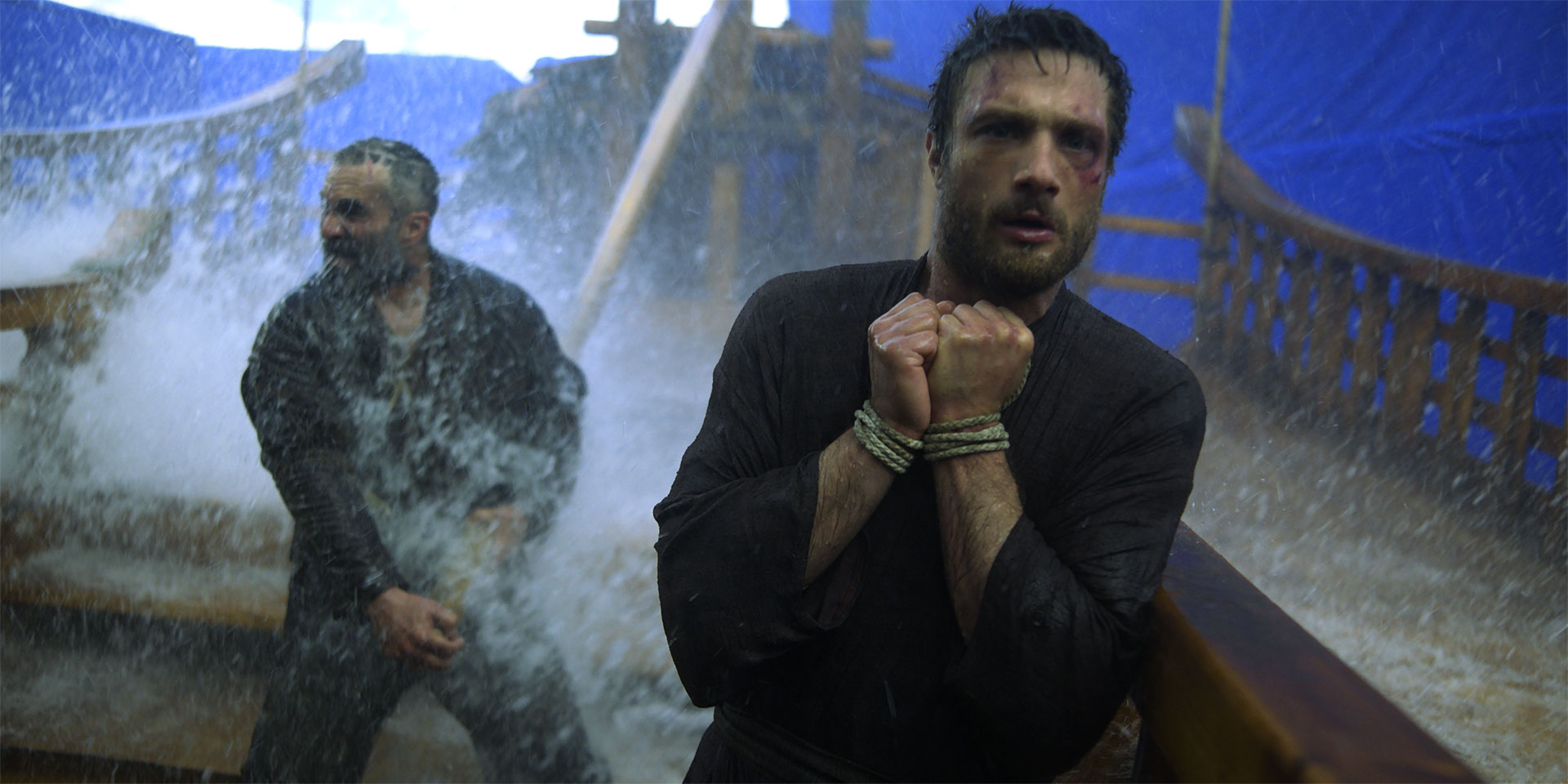


How was the collaboration with the showrunner and the directors?
It was quite good. I was able to do a lot of second-unit directing on the show, on the production end. I like doing that as a visual effects supervisor, because it helps me to really get inside the director’s head for a particular episode, as well as that of Justin Marks, our showrunner. It provides an additional window for me into what their thinking is for this epic story.
Overall, they trusted me a lot with the second-unit directing, getting the scenes and shots that we needed. Then when we got to post, I dealt with the showrunners a lot more than the directors. Thankfully through many a creative decision and conversation, Justin and I had developed a good relationship… and so trust had been earned and given, and I was very grateful for that. I enjoyed plenty of mutual collaboration, where I would bounce ideas off him and he would bounce ideas off me. We knew we were working together towards the same goal: to make the show as accurate and authentic as it can be, but also as visually stunning as it could be. Nine times out of ten, when I would show Justin a progression, he loved it. We were consistently on the same page and seeing eye-to-eye. It was a very pleasant and smooth experience for myself and the whole visual effects team, not to mention Justin. It was a true testament to my team and our vendors, who also proved to be effective collaborators with both myself and Justin.
There was just so many talented people that came together to create this show, and everyone recognized each other’s talent, so there was a lot of respect and trust. It made things go so smoothly and it helped us come up with the best possible result.

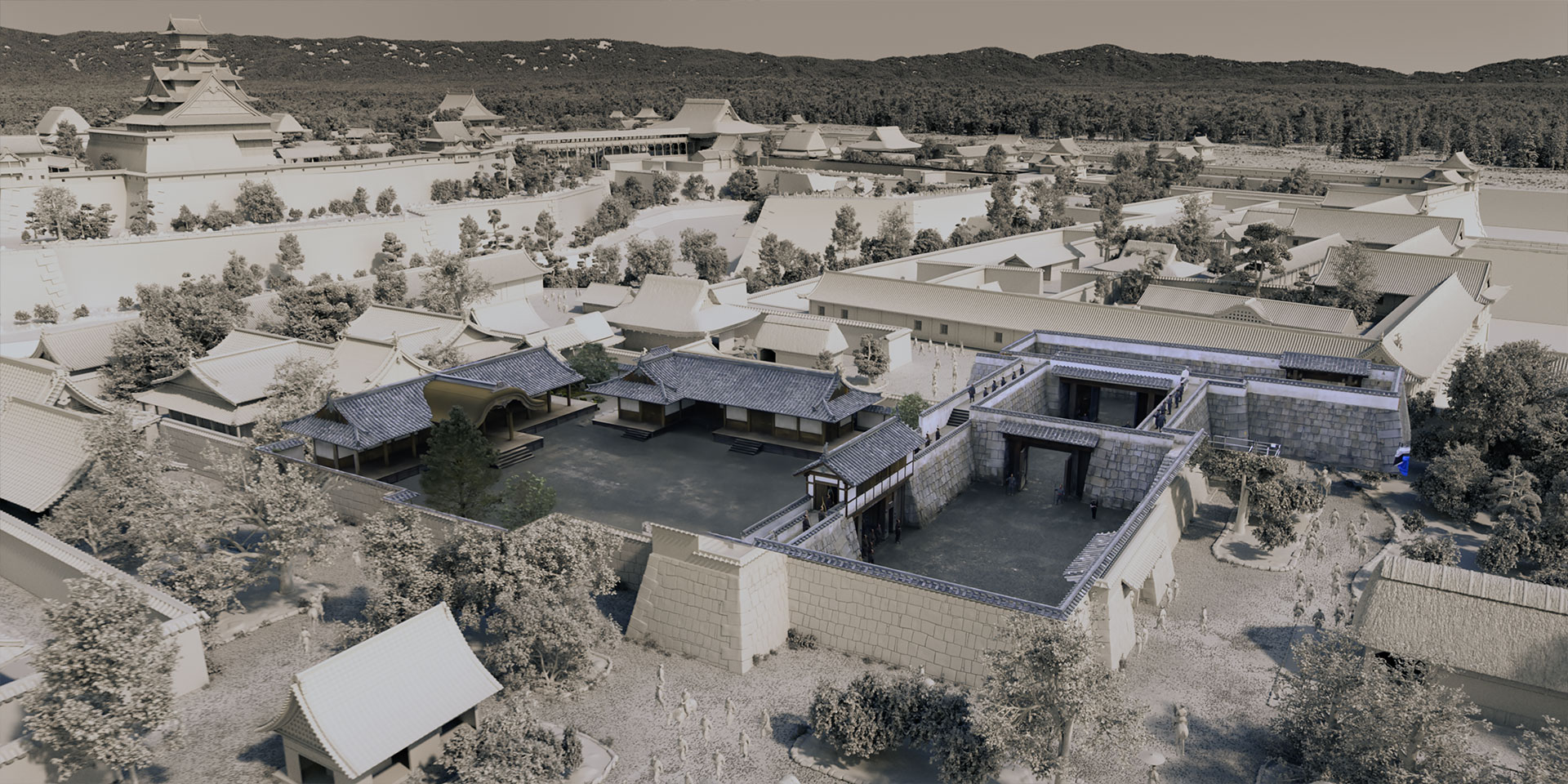

How did you choose the various vendors and split the work amongst them?
When we first started Shogun, the industry was extremely busy. Vendors could pick and choose what they wanted to work on. We really had to work with certain vendors and their schedule, and we were fortunate to get some very highly sought after vendors on this show. Fortunately, because we were working on Shogun, the reputation of the story and book gave us a little bit of an advantage I’d like to think.
I knew what various vendors were really good at and what their talents were. I worked with a lot of new vendors on this show that I haven’t worked with in the past, but I had recommendations from colleagues. I also knew their work from other shows, with Important Looking Pirates (ILP) being a prime example. You know, I’ve seen some of their water work on Lost in Space and Black Sails. In general, their past work was right in line with where we needed to be on Shogun, and I knew I wanted them to do all the water work sequences on the show. Their proprietary water package and pipeline along with their incredible fx artists, were exactly what we needed on Shogun.
I had another recommendation for Refuge VFX in Portland, and they were just phenomenal. SSVFX, I had seen some of their world building and they hit it out of the park with Osaka. Goodbye Kansas in Stockholm also did an amazing job on episode 8, building everything in Edo. I knew they also did excellent digital people, and so they did the army on the beach, as well as Erasmus getting towed into Ajiro in episode one.
What are the key considerations when designing and creating visual effects for historical settings, such as the feudal Japan of the 17th century?
Authenticity and accuracy. Those were the primary factors we considered when designing and building the world. We did months and months of research leading up to production and post-production. We were building a world that doesn’t exist anymore, so we wanted that world to be as historically accurate and as authentic as possible, right down to the smallest minute detail. It was really important that the Japanese people would be able to watch this series and appreciate how much effort went into accurately portraying their history and culture. And not just the Japanese people, but the Japanese historians who know this world inside and out, and could hopefully watch this show and appreciate the effort and lengths we went to in trying to get it all right.



What challenges did you encounter when recreating the atmosphere and aesthetics of feudal Japan, and how did you overcome them?
Important for Japanese people and historians watch the series and appreciate the effort
Could you discuss the role of research and historical accuracy in the creation of visual effects?
We incorporated the help of quite a few Japanese advisors and historians, all masters in their specific areas. Samurai movements, serving tea, master of gestures, etc. One historian in particular, Frederik Cryns, is a professor of Sengoku-era Japan at the University of Kyoto, and he’s pretty much regarded as the world authority on this particular time in Japanese history. We relied on him a lot, because there is a significant amount of information out there about this particular period, but not all of it is accurate, and he helped us sift through all that information. We were able to build an accurate rendition of Osaka Castle and what it looked like in the 1600s through numerous pieces of art. Through Frederik, we even went to a museum in Japan and found a blueprint of the main tower of Osaka Castle.

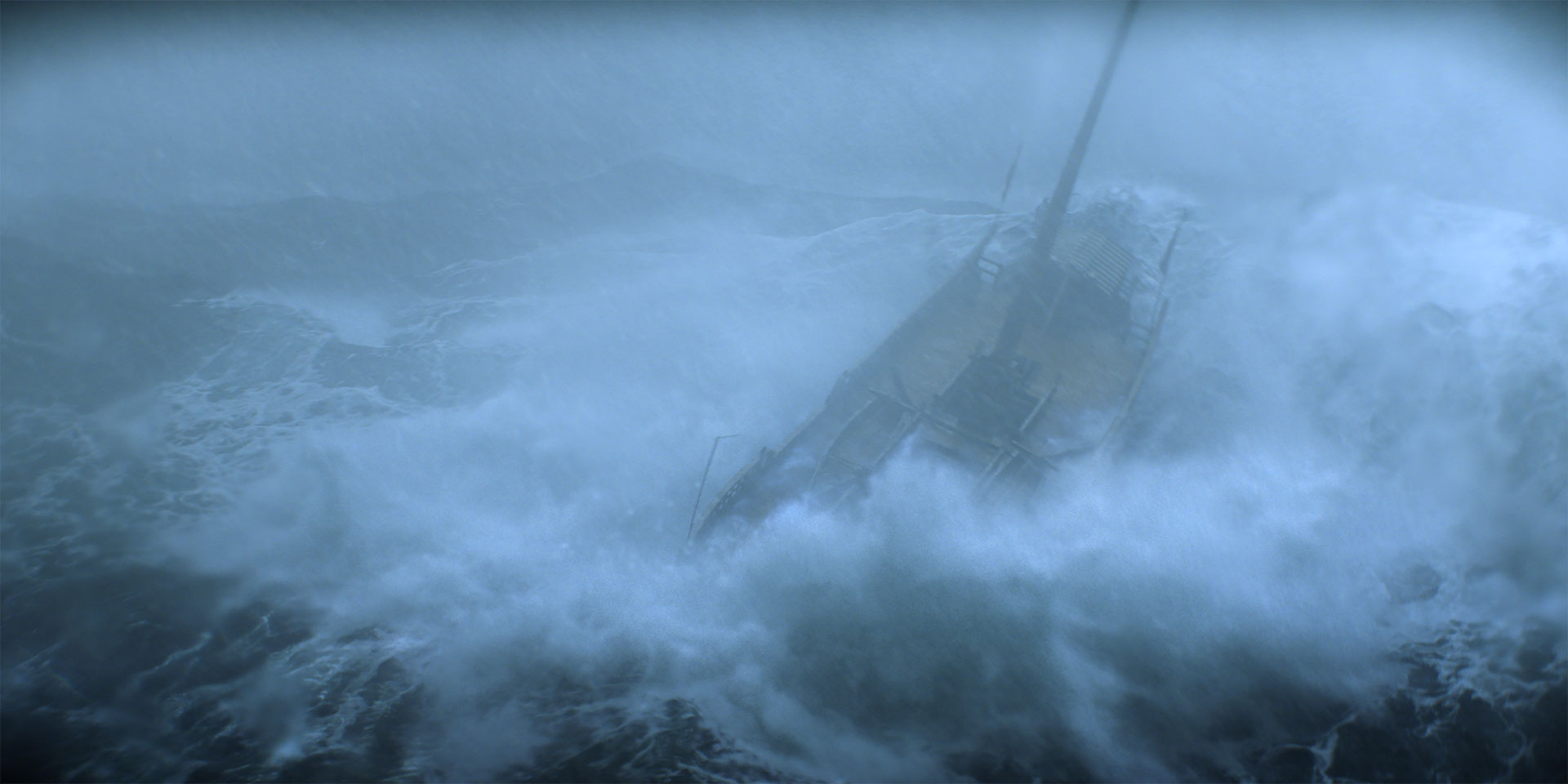
What techniques and technologies did you employ to authentically represent the architecture and landscapes of 17th century Japan?
SSVFX built Osaka using a Houdini procedural system, which enabled us to change the layout of Osaka on the fly, depending on our various sequence and shot needs. When we were down in the city, we could easily shift the view to another part of the city using that procedural system which could in effect turn one set into an entirely different location. It worked well.
Sometimes, we did extensions in Unreal Engine. We did various castle extensions with Unreal, including the buildings and trees that you see over the walls in numerous scenes, the skies, views through the gates you name it. And every single structure in every beat of our story was placed with purpose ..because from the research, that’s where it belonged.
Based on the location of today’s Imperial Palace in Tokyo, we used that to orient the environment around Edo. How far Fuji would be and where we would place it when seeing from inside the city. Which side was the bay on, and how far away was it? At the beginning of episode 8, Toranaga and his army are riding into Edo from the west which would be the western suburbs of Tokyo today. We shot that in a corn field outside of Vancouver which then had to become the budding rice fields of early Edo. Fuji had to be visible in the distance in one direction, Edo under heavy construction visible in the opposite direction. We estimated on an actual map where they would have been in the real world, and what would have been visible in any direction. Not to mention that we had roughly 100 real people that would need to become 10,000. So every shot in that 5 and a half minute scene became a VFX Shot. Every view was a created environment based on what would have really been there, at that spot in Japan, at that time. We had many scenes throughout the series treated much the same way.

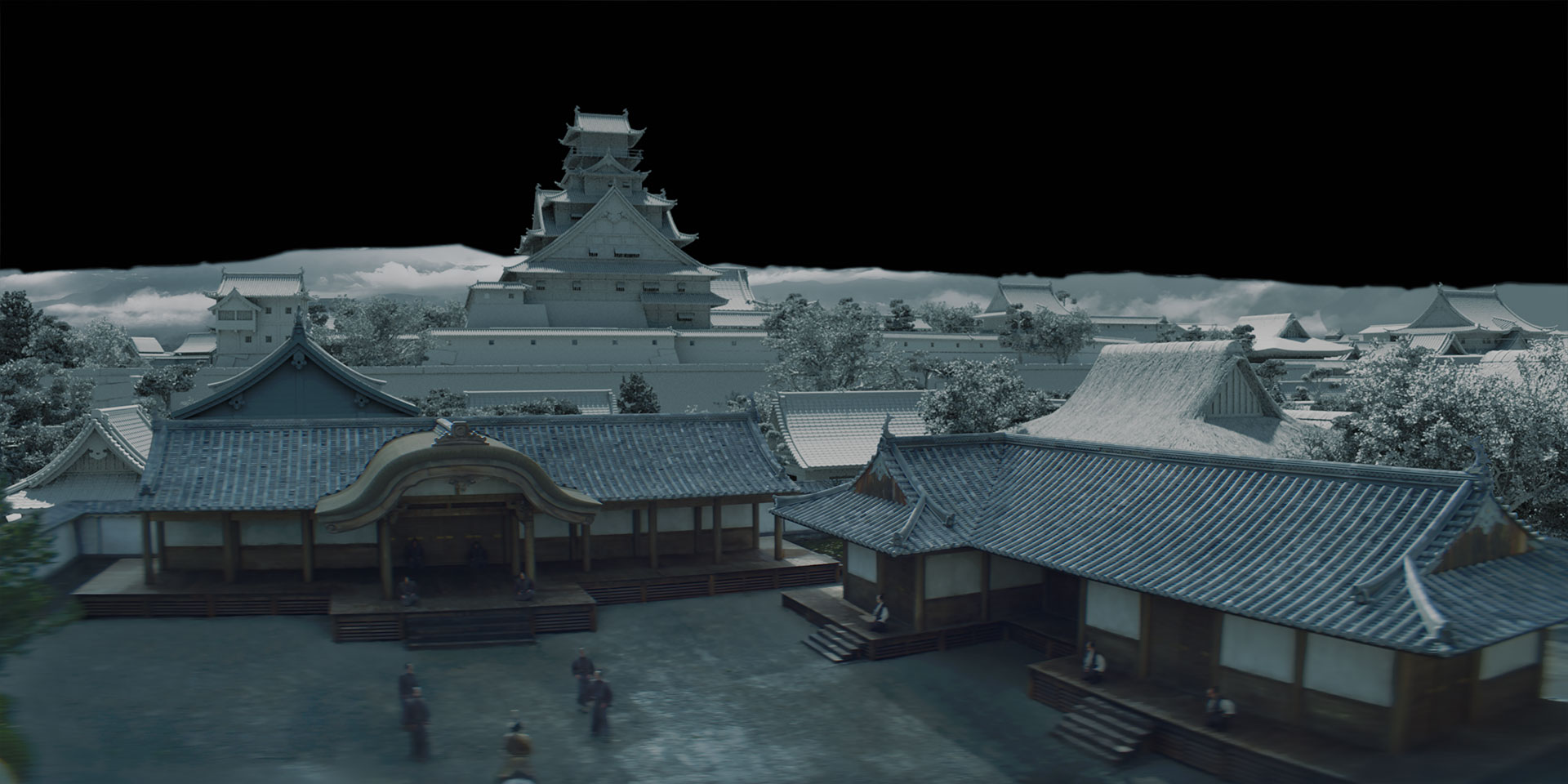

Can you share any anecdotes or interesting insights from the set regarding the implementation of visual effects in the series?
The world of the show had to be historically accurate and authentic, but it also had to be grounded in reality and real world physics. And when and where we used VFX had to be invisible… carefully crafted to enhance and immerse. Everything was done in service of the story. When we did the earthquake and the landslide, we took drone photography of the mountain that was adjacent to our practical set, took elevation data, so that we were able to build a perfect digital replica of that mountain right down to the last pebble. This way when that mountain collapsed, this helped us ensure the landslide behaved correctly in accordance with the scale of our real world scene.
How do you ensure consistency in visual style and quality throughout the series, especially when dealing with scenes shot at different times and locations?
It’s a great question. To be honest, some of it is luck. For instance, the cliff sequence in episode one was filmed at three different locations on three different days, none of which were near an actual ocean or an actual cliff I might add… that ocean and cliff environment is all CG. Anyway luckily, we got the same weather on all three days. Other times, we would shoot various wide scenes and it would all be overcast and cloudy, then we get in there to shoot coverage and it would be sunny. So we’d bring in giant 40×40 blue screens on telehandlers that we would use to block out the sun! Anything in the background that was still sunny would then need to be replaced with overcast VFX extensions! Sometimes we would use VFX to address fog and atmos consistency. And even later when we began shooting certain VFX heavy scenes with spherical lenses for ease of workflow on the VFX end… but would take a number of steps in comp to emulate characteristics of the anamorphic lenses that much of the series is shot with… the vignetting, the chromatic aberrations, etc.
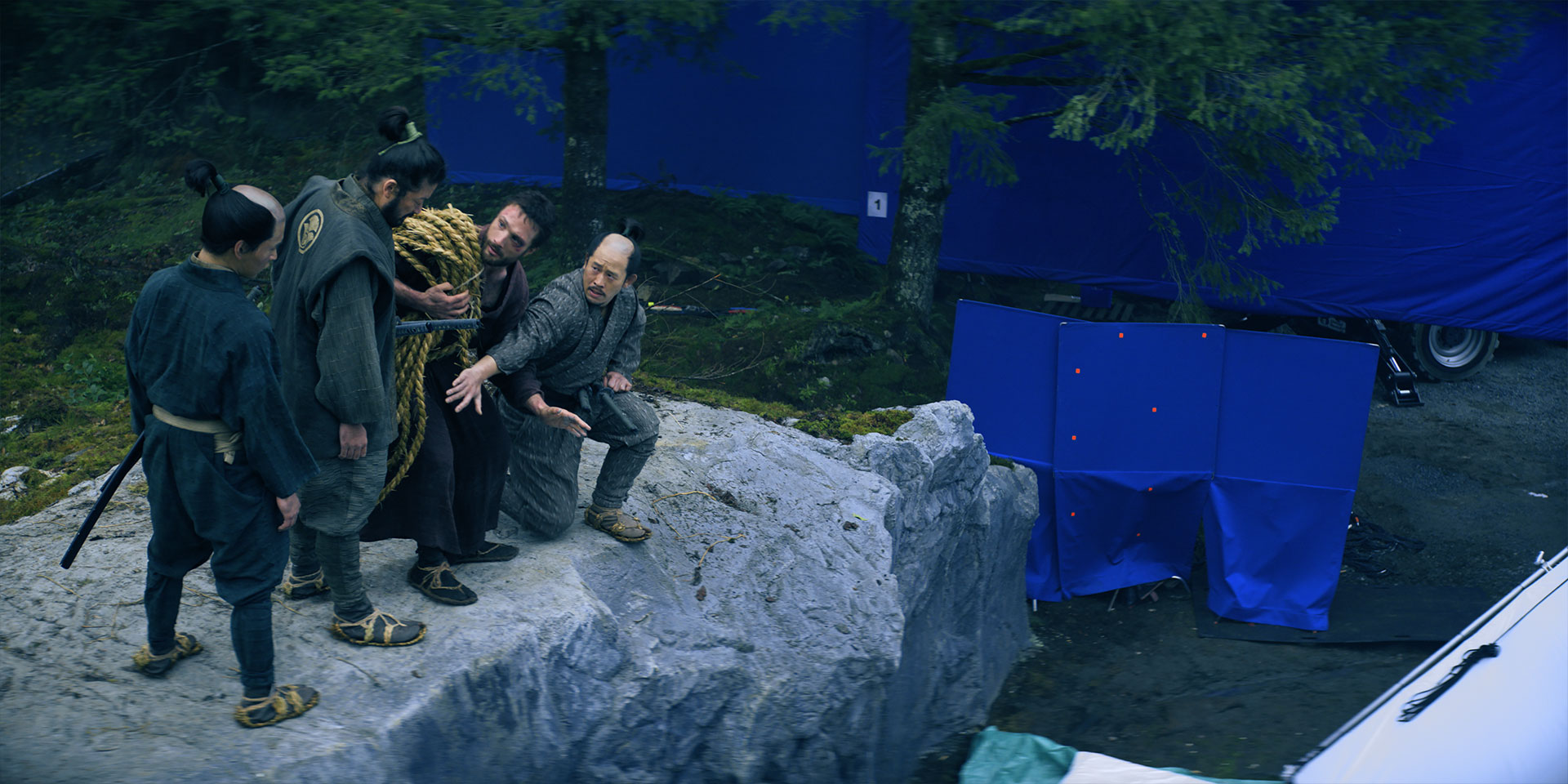
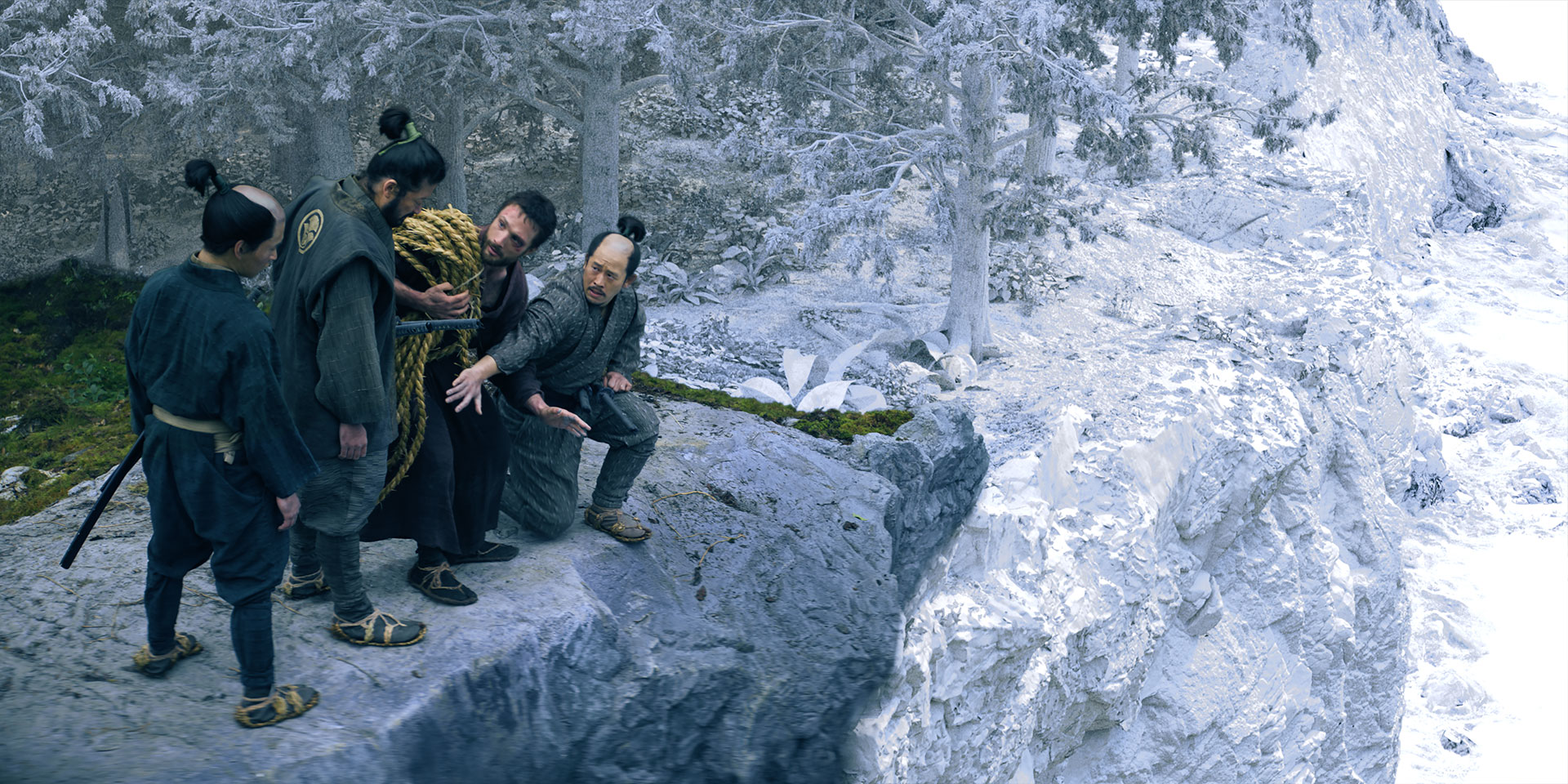
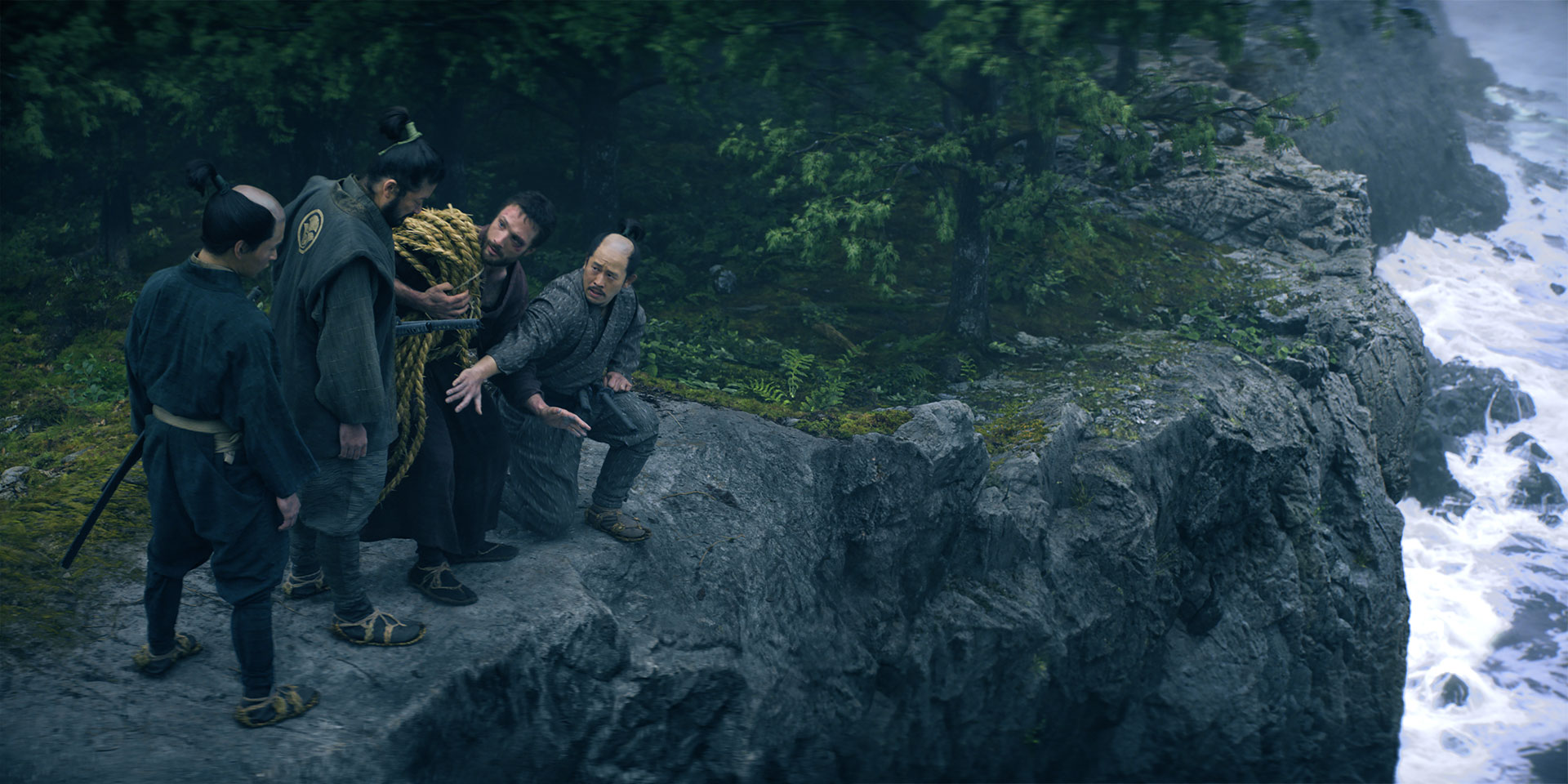
What role does collaboration play in the VFX process, particularly between VFX supervisors, directors, and other departments?
The role of collaboration is key. More often than not, collaboration requires communication, but more than anything it requires trust. As a VFX supervisor, I deeply value the trust I have received from my collaborators. I therefore try to extend that same trust to the vendors that I work with. I am fairly hands-off in terms of methodology, as I am primarily concerned with the end result, and I am excited by the uniqueness of each collaborator’s process.
In terms of other departments, I was consistently blown away by what all of the other departments came up with. Everyone involved with this show was just so talented. It made them easy to trust, and I think it shows in the final product.
What were some of the most demanding sequences in terms of visual effects, and how did you approach tackling them?
There were many, but the ship race out of Osaka in episode 3 comes to mind. Again it was a full 3d Environment, CG ships, CG water… we shot those practical ship sets in a parking lot surrounded by bluescreen with no water. The ship extensions had to be created, all of the water and ship wake sims, The entire Osaka Bay environment, hundreds of digital characters from Ishido’s grey army on the shore to the 250 Christian Samurai in the skiffs that the boats would run over. When we were shooting, we shot a ton of pieces with a general idea as to what major beats of the story would be left to VFX, in post, but that whole sequence was really shaped and molded on the post end. When we wrapped shooting we all hunkered down in LA for 3 months and with the help of 100’s of post vis grey shade ship animations, worked out that edit… and to that end, the story we were trying to tell. The excitement and jeopardy we were trying to achieve. Episode 3 alone had over 700 VFX shots, so it was a monumental episode.
The Earthquake was another sequence that stands out as well as the episode 1 cliff sequence and ship storm sequence. For the storm we placed the galley set on a gimbal which afforded us 34 degrees of angle rotation in any direction. Then we blasted our actors and practical set with dump tanks, rain trusses, water cannons, etc. Some of our takes were quite long and we would actually run out of practical water. So in addition to adding the raging ocean environment in post, ILP also added numerous CG waves, rain, camera shake, even wind… all simmed against match-moved scanned geometry of our practical set and actors. This way we were actually able to adjust the magnitude of the storm in post and cue wave events as needed for the edit.
And for all of the violence we had to do. This all required extreme attention to detail and again …all had to be in service of the story. Everything is carefully thought out and grounded in reality, in physics. We had to research how a cannonball would rip apart a human body, or how a human head would behave being separated from a human body. When a sword is going one way, and depending on the sharpness of the katana, how would that affect the spin of the head once it has been severed from the body? How fast would gravity then take over and drop said 10lb head? The things one thinks about… All of that had to be taken into account. And as VFX artists, we tend to separate ourselves from the horror of what’s happening and focus more on the technical side. I think we have to at some point. Then we can sit back and view it all from afar and appreciate the sometimes shocking and horrifying beats that the violence was intended to produce. I enjoy watching the audience react to these moments. To get that shock and awe is quite rewarding and means we did our job well.
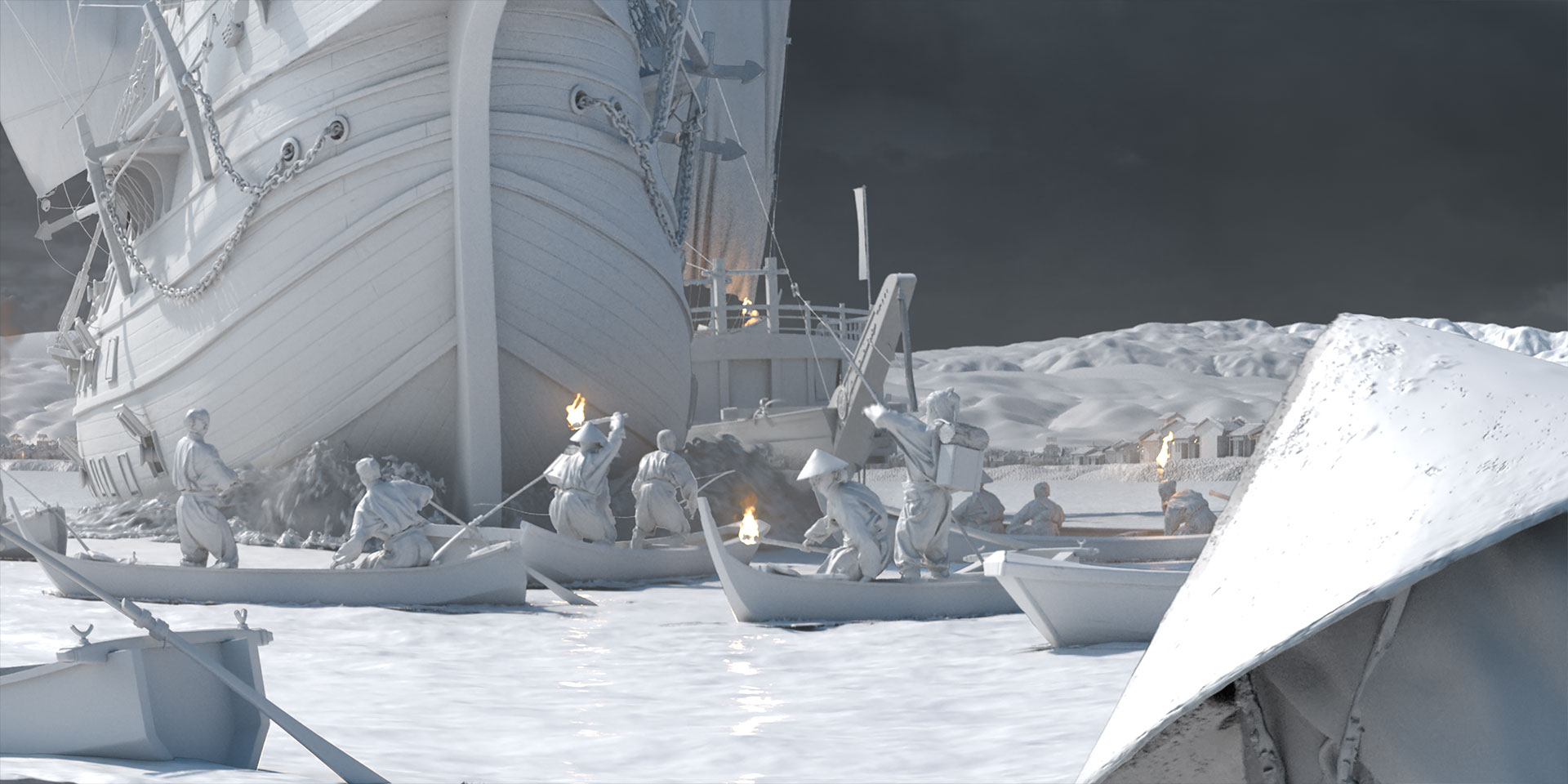
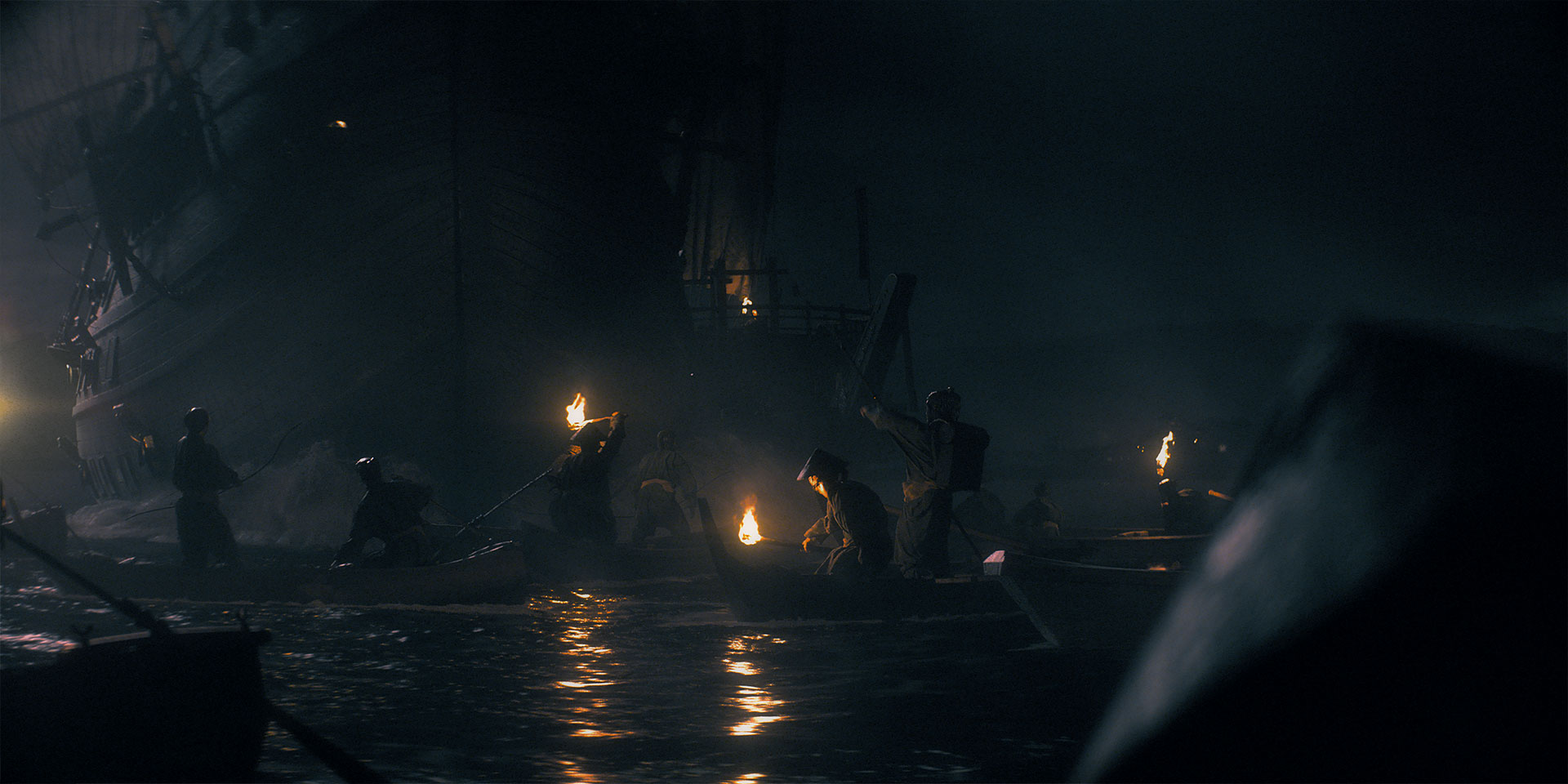
Can you elaborate on the process of creating and animating digital characters?
I think a lot of viewers would be surprised at how many CG characters are in the show. We have these giant armies going into battle, 10,000 samurai walking into Edo all around Toranaga, peasants in the field rushing to bow… and you really can’t even tell that many of these people are digital. We scanned some 150 background and main cast which the digital doubles would be derived from. It was important for the intricacies of the costumes and all the detail of each individual character. Our vendors did a number of motion capture shoots for pretty much every VFX scene that required digital people. The actions and motion capture all had to be carefully considered as again… the gestures and way of moving can be very specific.
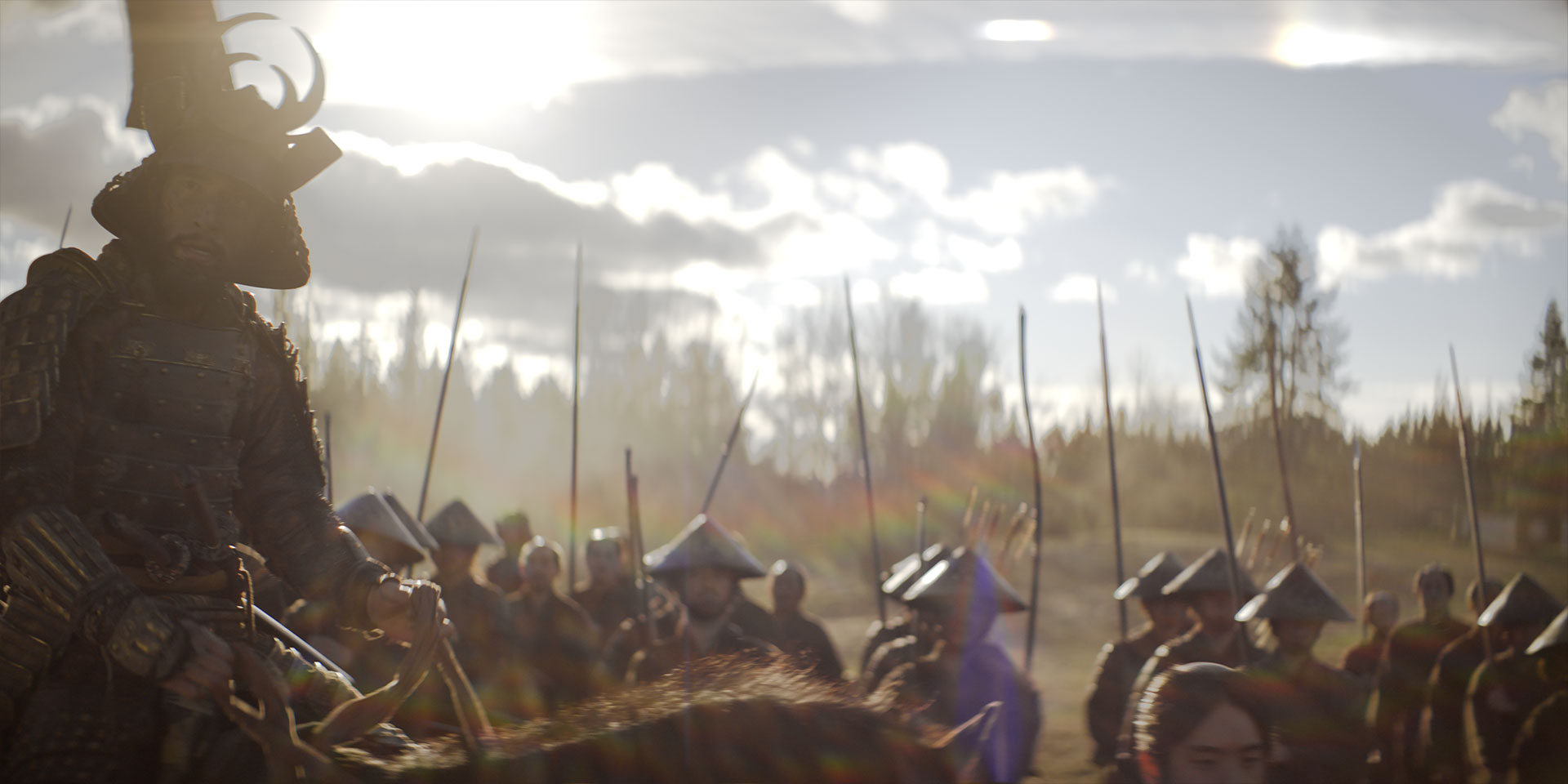
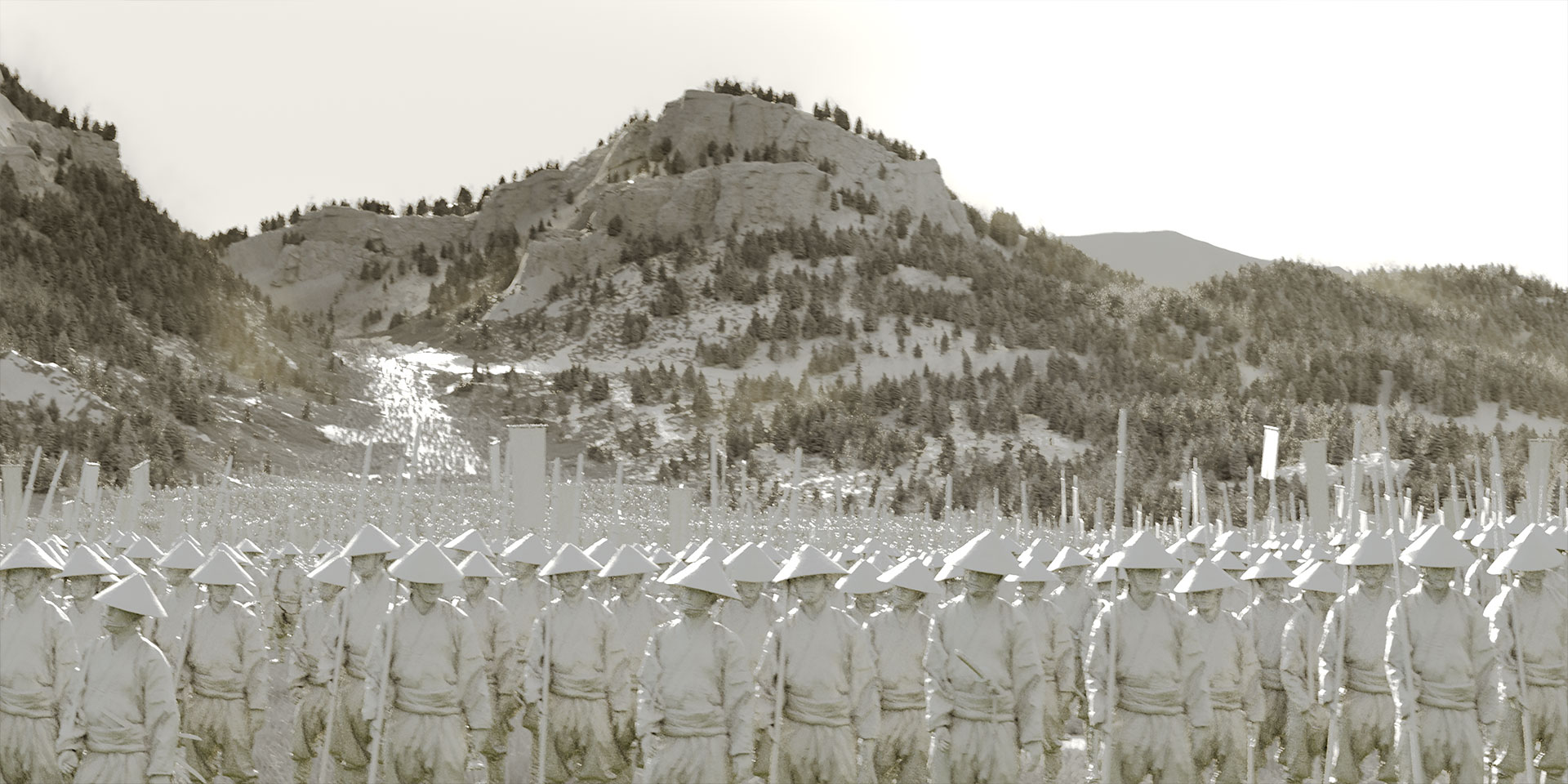
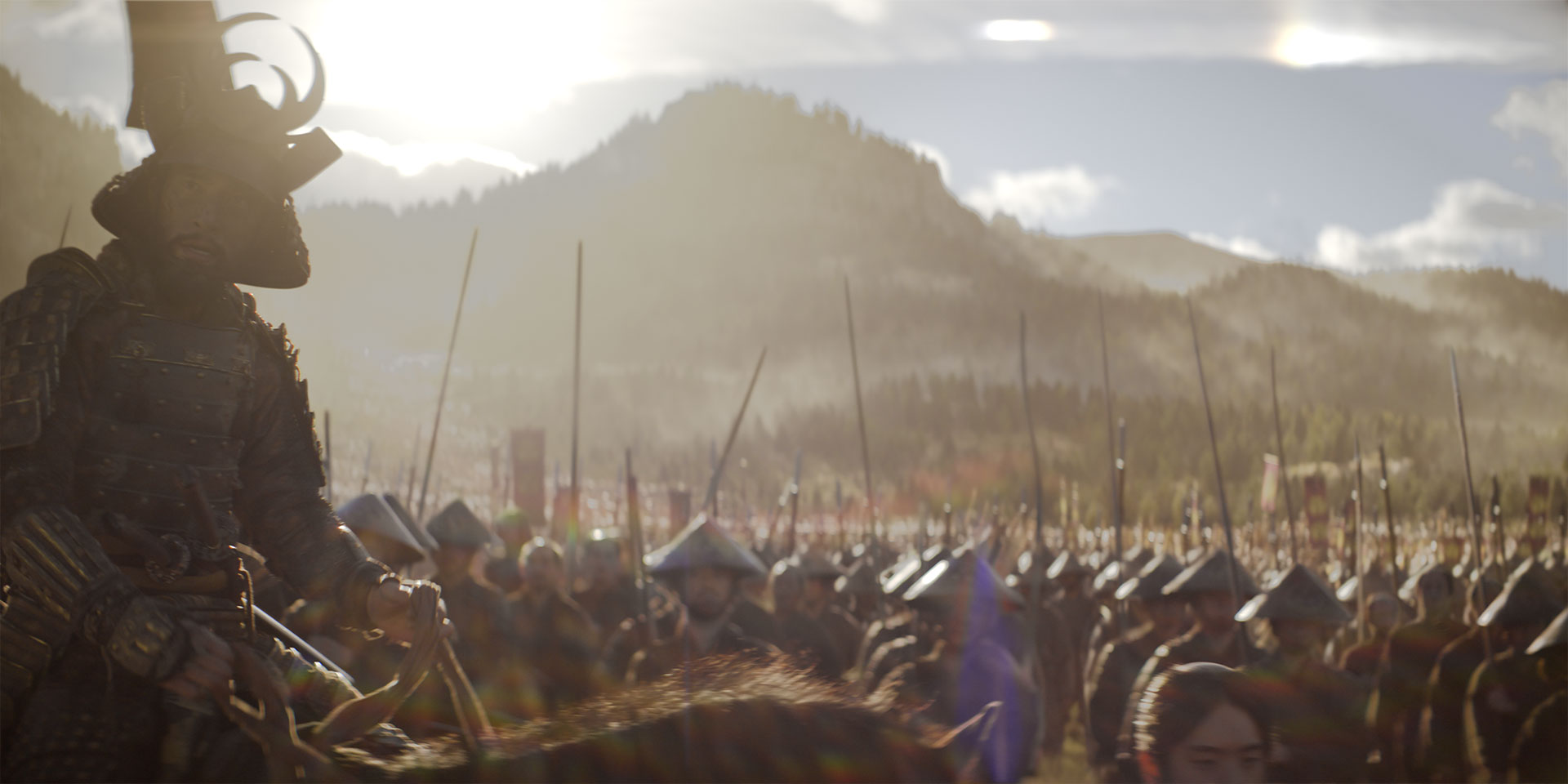
What considerations did you have to make regarding lighting and color grading to achieve a cohesive visual aesthetic?
Chris Ross, our DP on episodes one and two, set the color grading for the series. We made tweaks on it, but we already had the grade implemented on the monitor, so whatever we were looking at was already corrected for color. We did some small color corrections in post, but we never veered too far from what Chris had set. The show always had a cooler look to it, kind of a greenish hue, and we tried to honor that throughout.
We used the CDLs on every comp, even before final color correction. That’s how shots were reviewed and approved, because we knew those were going to be very close to the final look the show would have. Of course, I also sat in on every color session that had to do with VFX, which was almost every color session for every episode. We’d go shot-by-shot, making tweaks to the overall grade and adjusting levels so the show looked as beautiful and as real as it possibly could.
Can you discuss any specific scenes where visual effects were particularly challenging or innovative?
For the cliff sequence in episode one, we did have a set for the bottom of the cliff set in an 8ft deep 60ftx60ft tank: it was a bunch of boulders where Rodrigues would be laying down. We shot footage of that from up top, with practical waves coming in and we were going to use that alongside a big CG extension, but ultimately that didn’t us to make the waves as big as we wanted Extending our practical set into a full CG ocean and rocky coast environment also presented some challenges in making it appear seamless. We decided to scrap all the live action footage from the top of the cliff looking down and do it entirely with VFX. So everything you see looking down from the cliff in that scene is done entirely in VFX. The ocean, the rocks, the waves crashing, the white water, even Rodrigues ..nothing was real. Additionally ILP was able to create some very realistic white water within the crashing waves utilizing 2d projections. These white water projections behaved correctly with the very complex water sims utilizing vectors embedded in the renders.
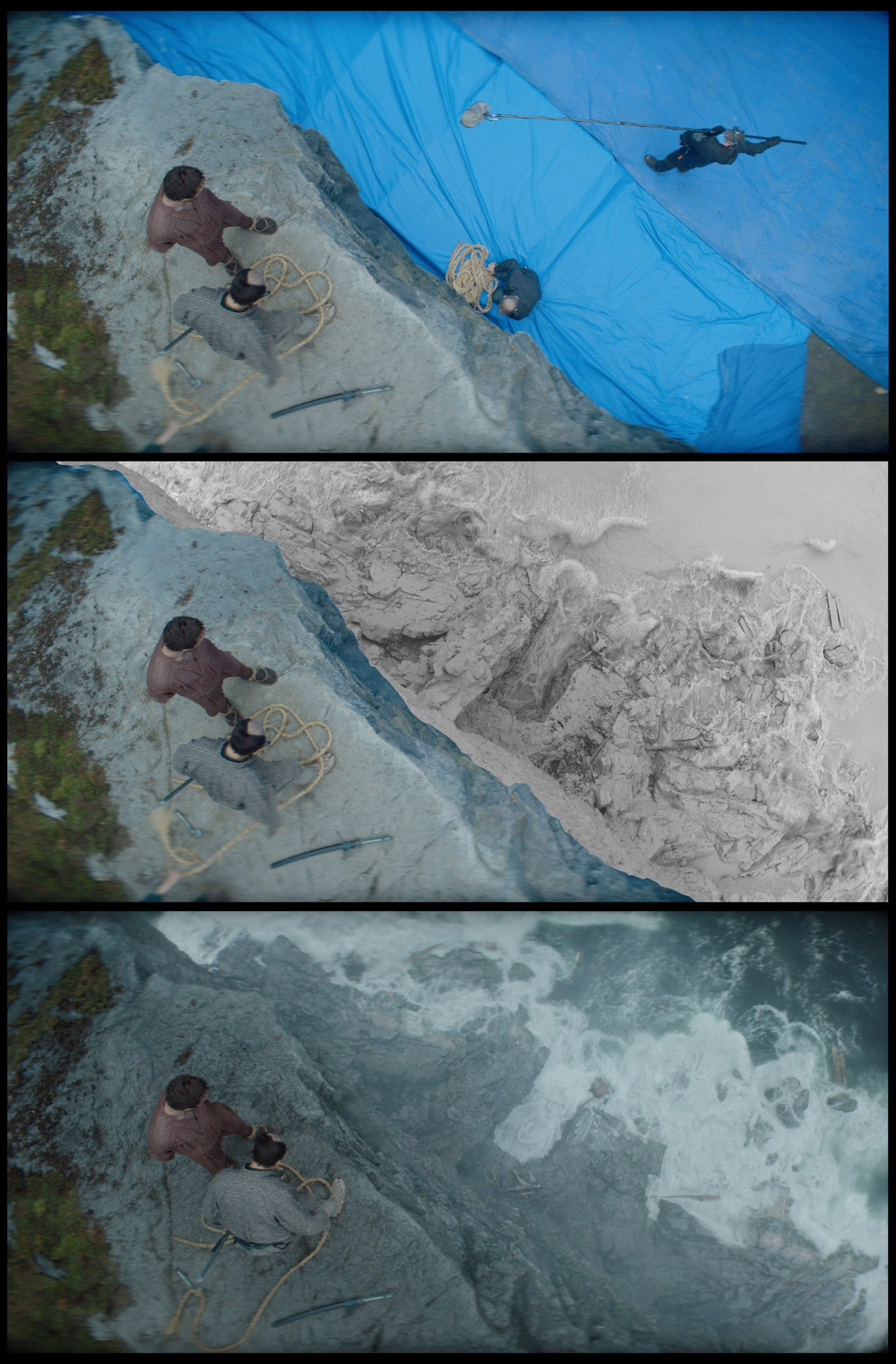
Looking back on the project, what aspects of the visual effects are you most proud of?
It really keeps coming back to accuracy and authenticity. I notice those traits coming together especially well whenever we would have large-scale shots of those massive armies. The armies in the day of Shogun numbered in the tens of thousands, but we never had the practical space to accommodate an army of that size. So every big wide army shot that we did required a constructed environment as well. Even the arrows fired from those armies were all done in VFX. We never actually fired an arrow on set.
There was just so much care and research that went into every detail. This show was a huge undertaking. Nothing had ever been done before on this scale, representing this era in Japanese history at this scale and magnitude. I am very grateful to have been a part of it.
Tricky question, what is your favorite shot or sequence?
It is really hard for me to narrow it down. My favorite sequence from a technical and storytelling standpoint is when Jozen and his men get ripped apart by the chain shot cannonballs at the end of episode four. From a VFX point of view, it was extremely well done. I am really proud of our whole team for depicting how horrific that would look. Of course, it’s also a really shocking moment in the story. It is a notable achievement in VFX, and the visceral nature of it has stuck with me and a lot of other viewers I have spoken with since the show has aired.
Another personal favorite of mine is when Erasmus is towed into Ajiro Harbor. That was not going to be a part of the episode, but when we got to post-production, FX asked us how Erasmus got to the bay in the first place. Justin asked me what I thought, and I said it was probably towed there with skiffs. FX loved that idea from a visual standpoint, so I took our second unit out and directed a drone unit for that. In post we then added all the people, the village, the ship, the skiffs, and even replaced the practical water with CG water in order to do all the correct boat wake sims. Goodbye Kansas did motion-capture shoots for all the villagers rowing the skiffs, and the whole thing just came together to form one of my favorite individual shots in the show.
I also have to mention the Mariko fight in episode nine, which is my wife’s favorite scene. It’s such an impactful moment in the story, when Mariko is trying to leave Osaka Castle and is stopped from doing so by Ishido’s men. Ishido’s men kill all of her samurai, and then she tries to fight them, but just can’t. So much was done for the blood and violence in that sequence from a VFX standpoint. All the blood on the walls, the blood and limbs and severed bodies…all of that was done in post. But again it’s just such a powerful moment in the story as well …another perfect example of when VFX is crucial in the telling of the story.
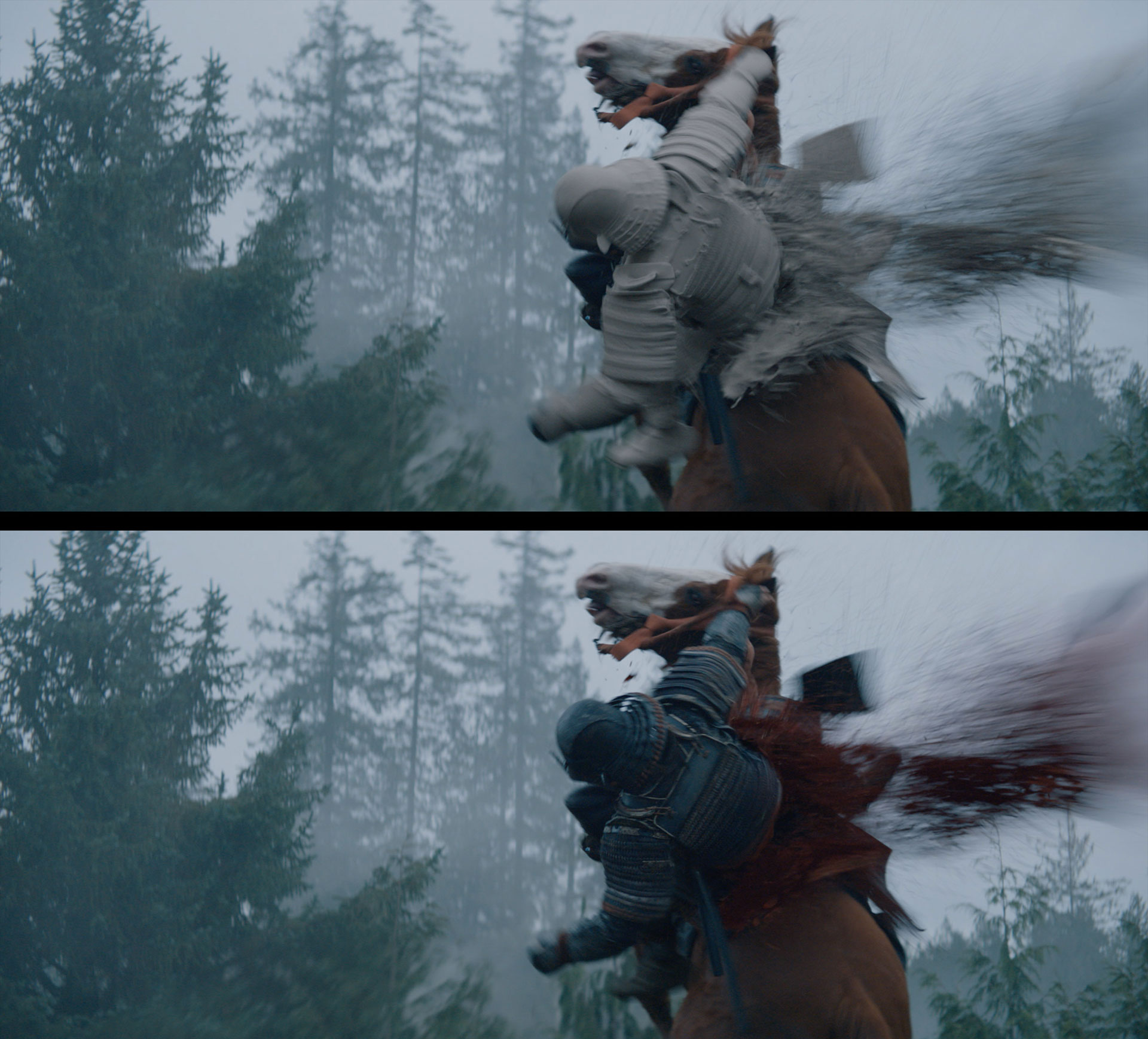
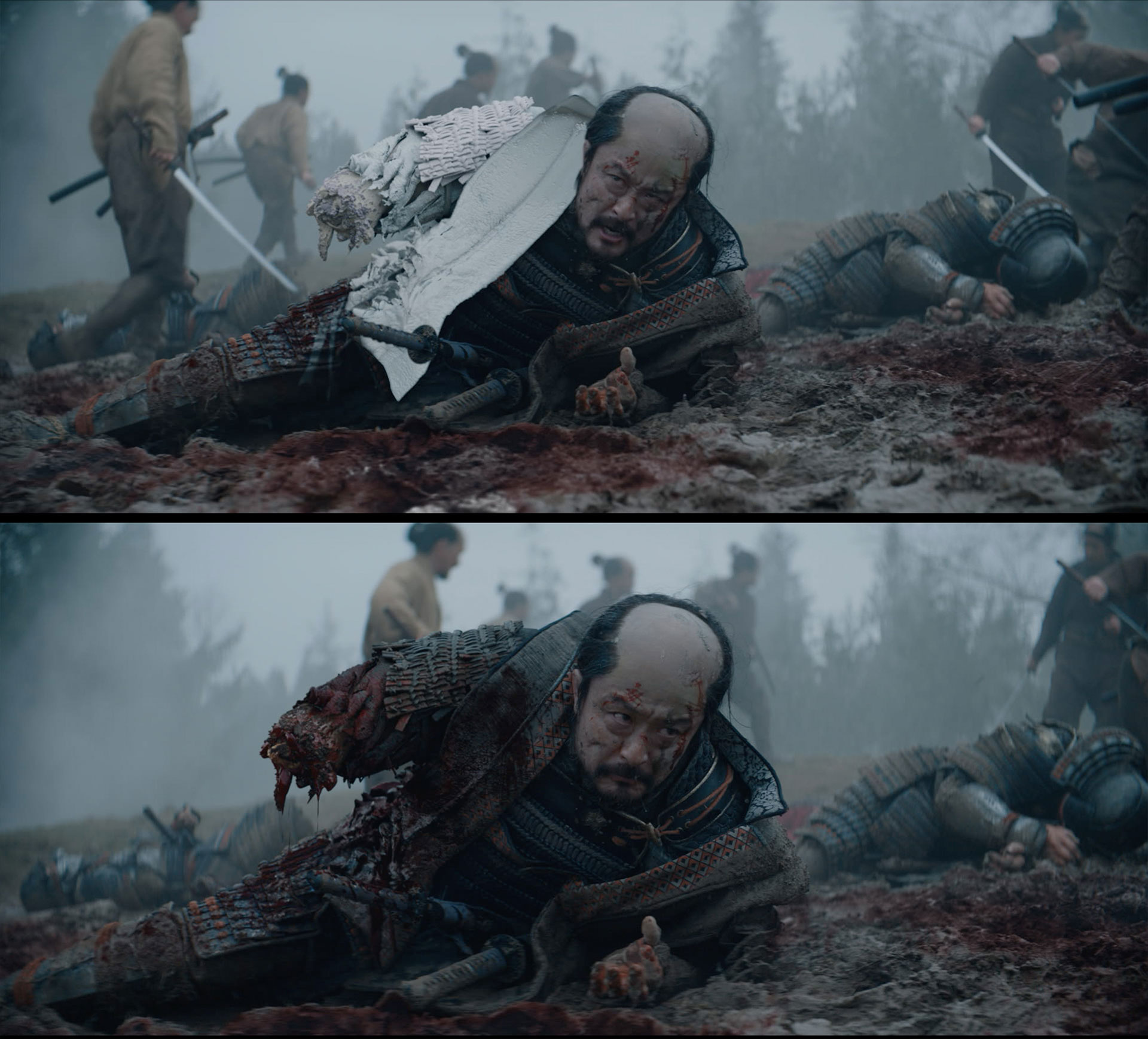
What’s the VFX shots count?
Somewhere in the realm of 3200 “real” vfx shots, although when you account for all the shots using retimes and split-screens, the count is closer to 4500.
What is your next project?
It was already a lot of fun to work on Shogun when we thought we were just making an excellent miniseries, but now that the show has been renewed for a second and third season, I am especially excited to return for seasons two and three of Shogun. More updates to come!
What are the four movies that gave you the passion for cinema?
Raiders of the Lost Ark, Ghostbusters, Jurassic Park, and the original Dune!
A big thanks for your time.
// VFX BREAKDOWNS
// TRAILERS
WANT TO KNOW MORE?
Goodbye Kansas: Dedicated page about Shogun on Goodbye Kansas website.
Important Looking Pirates: Dedicated page about Shogun on Important Looking Pirates website.
SSVFX: Dedicated page about Shogun on SSVFX website.
© Vincent Frei – The Art of VFX – 2024




